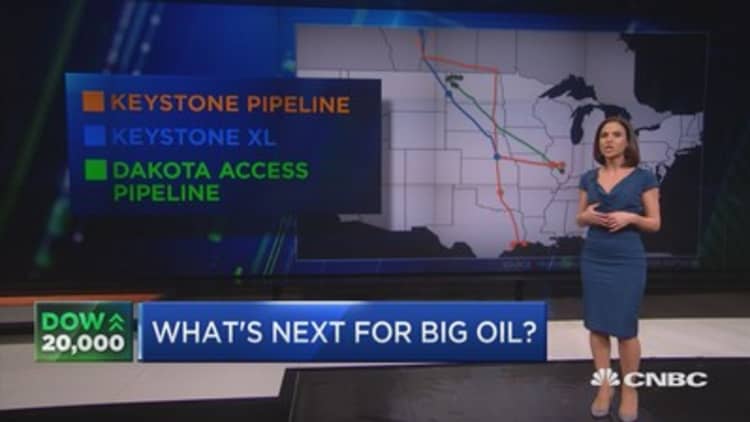Oil prices fell on Monday as news of another increase in U.S. drilling activity spread concern over rising output just as many of the world's oil producers are trying to comply with a deal to pump less in an attempt to prop up prices.
The number of active U.S. oil rigs rose to the highest since November 2015 last week, according to Baker Hughes data, showing drillers are taking advantage of oil prices above $50 a barrel.
U.S. crude futures settled down 54 cents, or 1 percent, at $52.63. Global benchmark Brent crude oil prices were down 32 cents at $55.20 a barrel at 2:33 p.m. ET (1933 GMT).
Frank Klumpp, oil analyst at Stuttgart-based Landesbank Baden-Wuerttemberg, said "three factors that have been weighing on prices: the stronger U.S. dollar, the steady increase in U.S. rig counts and the (latest OPEC compliance data)."

The Organization of the Petroleum Exporting Countries and other producers including Russia agreed to cut output by almost 1.8 million barrels per day (bpd) in the first half of 2017 to relieve a two-year supply overhang.
First indications of compliance to that deal show members have cut production by 900,000 barrels per day (bpd) in January, according to Petro-Logistics, a company that tracks OPEC supply.
That suggests only 75 percent of the targeted cuts would be met, said Tony Headrick, energy analyst at CHS in Minnesota.
"There's an apprehension about how big that cutback is going to be versus the strength in U.S. crude production," Headrick said. "That gap is a little narrower than folks had anticipated more recently."
Tamas Varga, analyst at PVM Oil Associates in London, said the news was "not very encouraging" because it implied that only 75 percent of the OPEC production cut target was being met.

Oil prices have remained above $50 a barrel since producers agreed the deal in December, incentivising drillers in low-cost U.S. shale producing regions to ramp up activity.
"In our view the strong rise in U.S. shale oil rigs is a good thing because it will be needed over the next three years as non-OPEC, non-U.S. crude production continues to be hurt by the deep capex cuts both past and present in that segment," said Bjarne Schieldrop, chief commodities analyst at SEB Markets in Oslo.
He estimated the U.S. rig count will continue rising at a rate of seven rigs per week over the first half of the year.
Analysts at J.P. Morgan said they saw a rise in oil prices beyond $60 a barrel in 2018 as unlikely.
"For prices to be supported above $60/bbl in 2018 would likely require continued OPEC output reductions that continue to tighten the market beyond Q3'17 - something that looks unlikely at this juncture," they said in a report to clients.
Iran's oil minister Bijan Zanganeh said on Monday he expected oil prices to remain at around $55 a barrel this yes, according to Mehr news agency.

